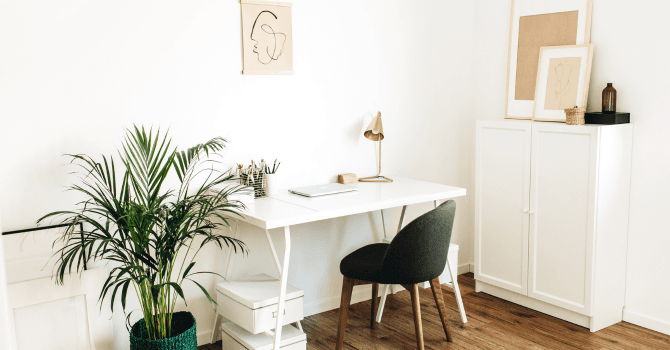French Drain Cost – How much will you pay for yours in 2025?
By Editorial Team
Updated on June 3, 2025

Needless to say, the long-term durability of a house depends heavily on the lack of seepage, above all in the foundation. Excessive humidity can have devastating and damaging long-term effects, both on your home and your health. Moreover, mould and bacteria growth can end up being very costly.
There are effective ways one can safeguard their home from excess moisture, most notably by draining the water that builds up around the structure and installing a protective membrane. These options include installing a French drain and waterproofing the foundation.
But first, what’s a French drain? Why’s it so crucial for waterproofing a foundation? Discover all there’s to know about this sort of renovation work.
How much does it cost per linear foot to install a French drain?

Source : Techno-drains Excavation Inc.
Definition and Function
A French drain is a drainage solution that prevents water from seeping into a house. This technique consists of installing a pipe at the base of a foundation to facilitate excess water flow, thereby preventing all humidity- or moisture-related problems. In a nutshell, it’s a piping system that’s positioned around the perimeter of a house, directly beneath ground level. It ensures that water flows away from your property without reaching the surrounding foundation walls.
What's the average price to install a French drain?
According to the information gathered during our sit-down with Sébastien Déry, Solutions Fondation Rive-Sud, several factors should be taken into account when calculating such costs, including:
House’s square footage
Foundation height
Surrounding environment (balconies, porches, patios, garages, etc.)
Therefore, it’s a tad difficult to provide an exact cost of installing a French drain. However, throughout our interview, we learned that “a French drain’s pricing ranges [per linear foot. Ed.] between $120 and $150, waterproofing included.” Additionally, one must factor in the costs of excavating to install the drain.
How to Install a French Drain

Source : Construction Overload
Is your land improperly drained? Installing a French drain will then become indispensable to ensure that water near your home doesn’t cause water seepage. The latter could significantly damage the foundation, such as cracks that could weaken the base of your property.
Before even considering the possibility of moving ahead with installing a French drain, consult with an industry expert who can set you straight on the situation at hand. Once they've determined that such work is necessary, the preparation phase begins.
The Prep Stage
A ground analysis will be carried out to determine which zone is most at-risk of flooding. Then, the next step will consist of locating the underground installations found in the basement of the home. Note that such information can be acquired from your local municipality. Lastly, you should also map out the entire collected water network via the drainage system.
Excavation and Drain Installation
The process will begin by excavating the foundation, to then proceed with the excavation. This step consists of digging a trench around the foundation that’s deep enough, meaning that the uppermost part of the drain is beneath the slab. Keep in mind that said trench must be at least 20 cm deep. Once the trench has been dug, fill it with 6 inches of crushed gravel onto which a geotextile membrane will be laid.
Now you can proceed with putting in the French drain: the drain itself should be positioned as close to the base of the foundation as possible and positioned on a downward slope with respect to its drainage point. Said slope should be 6 inches for every 15 metres. The drain is then hooked to a sump pit or sewer. Typically, the pipes will be covered with 6 inches of gravel or aggregate. Also, make sure that there’s at least 15 cm of gravel on either side of the drain. Last but not least step, backfill the trench with porous soil.
Time to Waterproof Your Foundation

Source : Soludrains et Fils Inc.
Since the walls of your property are now exposed, waterproofing your foundation is the next logical step. There are different ways to go about the waterproofing process, the first being tarring. This method, which can serve as the basis for another, is the least that's required by the Construction Code. In other words, tarring means using tar, a liquid coating made of solvents and asphalt that’s typically warmed prior to being applied with a pressure jet.
To prolong the watertight aspect of the foundation, you can choose to put in an elastomeric membrane. Most often, you’ll have to pick between a self-adhered or liquid membrane. The former is made with a rubberized bitumen coating, which is laminated onto a blue polyethylene film.
As for the liquid membrane, it’s made with bitumen emulsions and is applied in liquid form. Post-curing period, it becomes a rubberized membrane that’s especially watertight and, on the plus side, is devoid of joints.
Why and How to Waterproof a Foundation
Waterproofing is key to adequately protecting your home from the soil’s natural humidity, as well as preventing water seepage, which is likely to occur if your property is located near a phreatic zone. As such, waterproofing your foundation is indispensable if you want to ensure the prolonged service life of your foundation and the state of your concrete.
To waterproof foundations, the process consists of installing a plastic or synthetic rubber membrane on the footing and walls of the foundation, all the way down to ground level. Since this material is watertight, its installation is meant to protect the foundation against any deterioration, including cracks and mould growth.
Repairing French Drain-Related Problems
Like with all equipment, a French drain can malfunction or not function at all anymore, hence the importance of maintaining such installations. Just like with any type of pipe, the drain can clog as a result of limescale build-up, which obstructs the ducts. Clogging can also be caused by objects (pieces of wood, pebbles) that seep through the protections.
In order to fully understand a French drain problem, or to undertake the necessary repairs, it's highly recommended to call in an expert who has the necessary equipment to carry out this type of work. For instance, they might start with a camera inspection. A poorly repaired drain can have disastrous consequences with regard to the protection of your walls. Given the complexity of the work, it's important to hire certified contractors.
Installing a French Drain: Comparing Quotes
While the cost of installing a French drain is estimated to be between $15,000 and $25,000, the actual cost is likely to vary from one contractor to the next. Furthermore, as we’ve stated, the cost of installing a French drain depends on numerous factors. It’s best to request customized quotes from qualified professionals to obtain accurate pricing based on your situation. Bear in mind that, even if installing a French drain isn’t mandatory for homes built after 1955, it remains a worthy investment to ensure the sustainability of your property.
FAQ
French drain vs sump pupmp: What's the difference?
A French drain is a perforated pipe buried in a gravel-filled trench that redirects groundwater away from an area to prevent flooding. It passively drains water over time.
A sump pump, on the other hand, is an electric pump installed in a sump pit (usually in a basement) that actively removes water when it accumulates, pumping it away from the home.
In short: A French drain prevents water buildup by redirecting it, while a sump pump removes water that has already collected.
How do you clean a French drain?
To clean a French drain, follow these steps:
Locate the cleanout pipe: Many French drains have an access point (a vertical pipe) for maintenance.
Flush with water: Use a garden hose with high pressure to flush out debris.
Use a plumbing snake: If the drain is clogged, insert a plumbing snake to break up blockages.
Pressure wash (if needed): For stubborn clogs, a pressure washer with a drain jetting attachment can clear the pipe.
Check the outlet: Ensure the exit point where water drains is not blocked by dirt or debris.
Regular maintenance, like flushing the drain once or twice a year, helps prevent major clogs!
Is a French drain mandatory?
The installation of a French drain became mandatory for new constructions in Québec in 1955. For older homes that don’t have one, a French drain is highly recommended if you’re dealing with surface water issues, such as wet spots on your lawn or a constantly damp driveway. This system is also useful for preventing water infiltration in the basement.
How do I know if I have a French drain?
To determine if you have a French drain, start by checking your home's blueprints. You can also look for a water outlet around the foundation and check for any signs of moisture in the basement. If you’re unsure, a professional can conduct an inspection to confirm its presence and condition.
Looking for something else?
Related articles
The latest industry news, interviews, technologies, and resources.

Cynthia Pigeon
•07 Nov 2023
Clearly, the term “weep hole” is not something you hear on a daily basis. If you were to ask those around you, people are more likely to let their imagination run wild, drawing a connection between the verb weep and the noun hole. And yet, a weep hole does not pertain to weeping in the slightest.

Editorial Team
•07 Nov 2023
Among the aspects that make guests enter and return to a restaurant, there is the way they are treated upon arrival, the quality and variety of the dishes offered, but also the comfort of the place. It's on this specific point that we will elaborate in this article.

Amanda Harvey
•07 Nov 2023
Does your porcelain bathtub bear the marks of time? Showing its wear through every nick, scratch and stain from years of bathing. Does it need a quick update from it's 1970's bright green or heart-shaped, baby pink facade?

Amanda Harvey
•07 Nov 2023
With the advancement of technology, and with many jobs becoming digitized, it's growing more common for people to work from the comfort of their home. Whether you’re a new mother raising a baby while trying to meet deadlines or a person who has decided to branch out and bring that new business venture to life, having an efficient and relaxing home office will allow you to maintain productivity and get the most out of life.

Christine Simard
•07 Nov 2023
Your kitchen and dining room are places for gatherings and festivities. Whether with family or with your partner, whether your kitchen is small or large, you need to have a space that is both practical and efficient in order to give you the possibility to prepare all your meals.